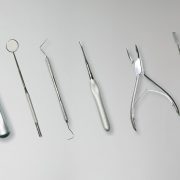Composite resin restorations have become a cornerstone of modern restorative dentistry, offering both esthetic and conservative treatment solutions. However, long-term clinical success depends on meticulous technique, appropriate material selection, and patient compliance. This article synthesizes ten clinically relevant principles, drawn from contemporary literature and expert consensus, to optimize composite restoration outcomes.
The evolution of composite resin materials has significantly advanced restorative dentistry. Modern adhesive systems, filler technologies, and polymerization methods have expanded the scope of composite restorations. However, despite these advancements, achieving predictable, durable results requires strict adherence to fundamental restorative principles. Factors such as polymerization shrinkage, marginal adaptation, and long-term wear can be carefully managed by using these 10 tips:
1. Accurate Shade Selection and Stratification
Natural esthetics in composite restorations depend on accurate shade selection and proper layering techniques. Shade selection should be performed before tooth dehydration, as desiccation can make the enamel appear lighter than its true color. Standardized lighting conditions, such as daylight or color-corrected LED lights, should be used to ensure consistency.
Vanini’s stratification technique, which involves using multiple layers of composite with varying translucencies and opacities, mimics natural dentin and enamel. Enamel shades should be more translucent, while dentin layers should provide opacity and depth. Staining techniques may also be incorporated for enhanced characterization in highly esthetic zones.
2. Rubber Dam Isolation
Moisture contamination remains a leading cause of adhesive failure in composite restorations. Saliva, blood, and gingival fluid can interfere with bonding, significantly reducing bond strength. Rubber dam isolation provides an effective barrier, ensuring a dry, contamination-free field.
In cases where rubber dam placement is challenging, alternative isolation methods such as cotton rolls, retraction cords, or liquid dam materials may be used.
However, these alternatives are not as effective as a rubber dam, particularly in deep cavities or posterior restorations.
3. Caries Removal and Cavity Preparation
The concept of selective caries removal is now widely accepted, focusing on the preservation of sound tooth structure. Complete caries removal is essential in enamel, but deep caries in dentin should be selectively removed to avoid pulp exposure.
Cavity preparation should adhere to minimally invasive principles, creating smooth internal line angles to reduce stress concentration.
Bevelling the enamel margins, especially in anterior restorations, enhances bond strength by increasing the surface area available for adhesion. In posterior restorations, butt-joint margins are preferred to prevent marginal breakdown over time.
4. Adhesive System Selection and Application
The choice of an adhesive system significantly impacts the longevity of composite restorations. While self-etch adhesives have gained popularity due to their simplified application, etch-and-rinse (three-step) adhesives remain the gold standard for achieving the highest bond strength to both enamel and dentin.
Key considerations for adhesive application include:
- Proper etching of enamel (15-20 seconds) and dentin (10-15 seconds) with phosphoric acid.
- Thorough rinsing to remove etching debris without over-drying dentin (to prevent collagen collapse).
- Adequate primer application, ensuring the formation of a hybrid layer.
- Even distribution of adhesive, with excess solvent evaporation through gentle air drying before light curing.
Failure to adhere to these steps can result in post-operative sensitivity, marginal leakage, and bond degradation over time.
5. Incremental Layering Technique
Composite resin undergoes polymerization shrinkage, which can generate stress at the adhesive interface, leading to microleakage and secondary caries. The incremental layering technique reduces this shrinkage stress and enhances marginal adaptation.
Each layer should not exceed 2 mm in thickness to allow proper light penetration and complete polymerization. Oblique layering techniques are often recommended to distribute shrinkage stress more evenly across the cavity walls. Bulk-fill composites have been introduced to reduce layering time, but they require proper light curing to ensure full depth polymerization.
6. Optimal Light Polymerization
Adequate light curing is critical for achieving optimal mechanical properties and bond strength. Insufficient curing results in inadequate polymerization, leading to decreased wear resistance, increased water sorption, and higher risk of restoration failure.
Best practices for light polymerization include:
- Using a high-quality LED curing light with an output of at least 1000 mW/cm².
- Holding the curing light tip as close as possible to the composite surface without touching it.
- Following manufacturer-recommended curing times (typically 20-40 seconds per layer, depending on light intensity).
- Periodically checking the curing light output with a radiometer to ensure consistent performance.
Improper curing can lead to soft, under-polymerized composite that wears down quickly and compromises restoration longevity.
7. Contouring and Finishing
Proper anatomical contouring and meticulous finishing significantly impact both esthetics and function. An improperly contoured restoration can result in food impaction, overhanging margins, or occlusal discrepancies.
Finishing and polishing sequence:
- Initial contouring: Use fine-grit diamond burs or carbide finishing burs to shape the restoration.
- Intermediate finishing: Flexible discs (e.g., Sof-Lex) and finishing strips for interproximal areas.
- Final polishing: Use silicone polishers, felt wheels, or aluminum oxide pastes to achieve a smooth, glossy surface.
A highly polished surface minimizes plaque accumulation, enhances gingival health, and prevents premature staining or wear.
8. Occlusal Evaluation and Adjustment
Occlusal discrepancies can lead to restoration failure, patient discomfort, or even TMJ issues. A comprehensive occlusal check should be performed after finishing the restoration.
Key steps for occlusal adjustment:
- Use articulating paper to check high spots.
- Verify static and dynamic occlusion (centric and excursive movements).
- Adjust with fine diamond burs and polish the adjusted areas to restore smoothness.
Avoid excessive occlusal reduction, as over-adjustment can compromise the strength and durability of the restoration.
9. Interproximal Contact Management
Achieving proper interproximal contacts is essential for preventing food impaction and maintaining periodontal health. Poor contacts can lead to plaque accumulation, gingival inflammation, and secondary caries.
Techniques for achieving tight interproximal contacts:
- Use sectional matrix systems with properly contoured bands.
- Apply pre-wedging to slightly separate teeth before placing the matrix.
- Ensure firm adaptation of the matrix band against adjacent teeth.
- Use composite placement instruments and brushes to shape the material before curing.
If contacts are inadequate after finishing, minor adjustments with polishing strips or additional composite placement may be necessary.
10. Postoperative Instructions and Maintenance
Patient education is crucial for the longevity of composite restorations. Patients should be advised on proper oral hygiene practices, dietary habits, and avoiding excessive biting forces on the restoration.
Key postoperative recommendations:
- Use non-abrasive toothpaste to minimize wear.
- Avoid biting on hard objects (e.g., ice, pens, hard candies).
- Maintain regular dental check-ups to monitor restoration integrity.
Encouraging patients to follow these guidelines helps prevent restoration failure and ensures long-term success.
To conclude
Achieving durable and esthetic composite restorations requires a combination of material knowledge, precise technique, and patient cooperation. Incorporating these ten principles into daily practice enhances predictability, reduces failure rates, and improves patient satisfaction.




















Comments